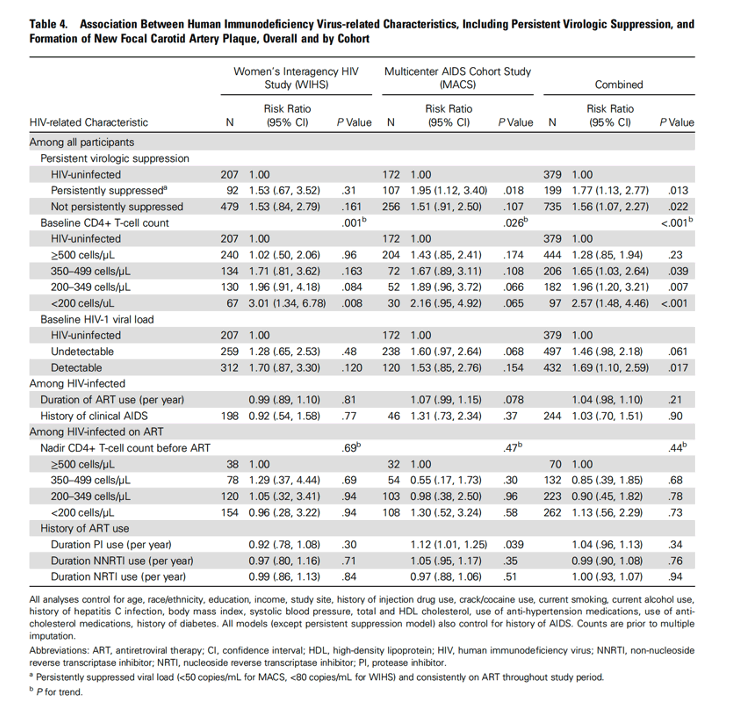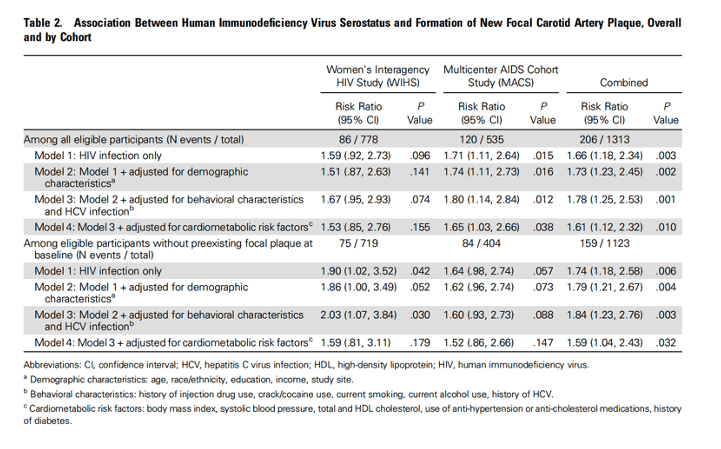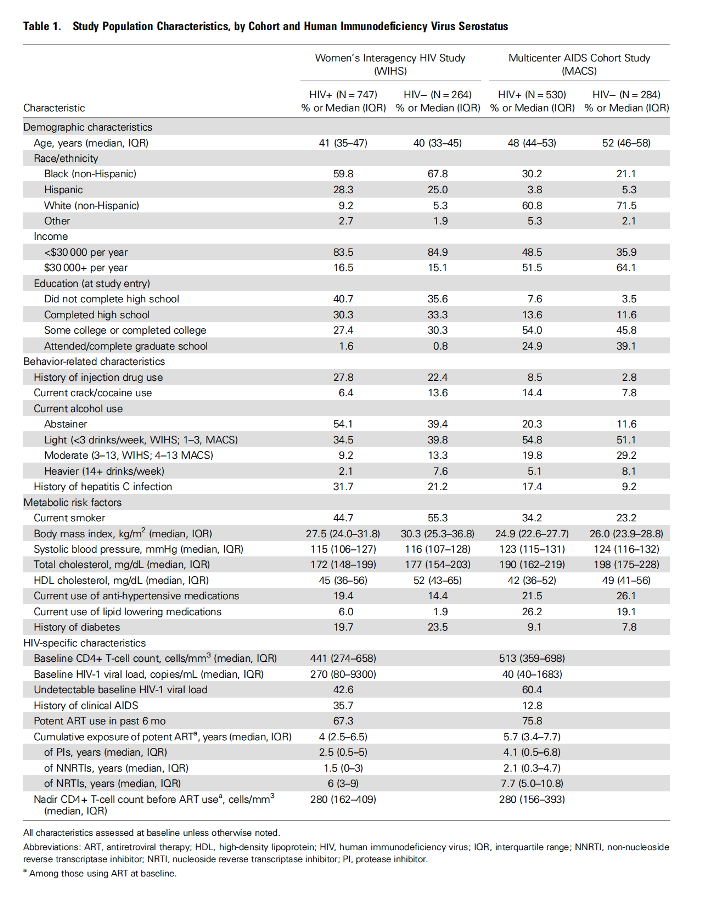| |
HIV Infection Is Associated With Progression of Subclinical Carotid Atherosclerosis
|
| |
| |
Download the PDF here
Download the PDF here
Using noninvasive carotid B-mode ultrasonography, we demonstrated that HIV-infected women and men had a 61% greater risk of new focal carotid artery plaque formation over seven years compared with uninfected controls, regardless of baseline vascular phenotype and after controlling for cardiometabolic risk factors. The HIV-associated risk was higher than that associated with smoking. Furthermore, the elevated risk persisted among ART-treated individuals with persistent HIV viral suppression, suggesting that sustained suppression of circulating HIV RNA to below detectable limits does not eliminate excess CVD risk in the treated HIV-infected population. However, HIV-infected individuals with high CD4+ counts were not significantly different from HIV-uninfected individuals in changes in carotid artery measures over time.
This study was published in 2015: our analysis does not examine clinical CVD outcomes such as myocardial infarction; although subclinical carotid artery disease has been strongly associated with such outcomes in non-HIV studies [39], this relationship has not yet been replicated in HIV-infected cohorts.
Abstract
Background. Individuals infected with human immunodeficiency virus (HIV) live longer as a result of effective treatment, but long-term consequences of infection, treatment, and immunological dysfunction are poorly understood.
Methods. We prospectively examined 1011 women (74% HIV-infected) in the Women's Interagency HIV Study and 811 men (65% HIV-infected) in the Multicenter AIDS Cohort Study who underwent repeated B-mode carotid artery ultrasound imaging in 2004-2013. Outcomes included changes in right common carotid artery intima-media thickness (CCA-IMT) and new focal carotid artery plaque formation (IMT >1.5 mm) over median 7 years. We assessed the association between HIV serostatus and progression of subclinical atherosclerosis, adjusting for demographic, behavioral, and cardiometabolic risk factors.
Results. Unadjusted mean CCA-IMT increased (725 to 752 μm in women, 757 to 790 μm in men), but CCA-IMT progression did not differ by HIV serostatus, either in combined or sex-specific analyses. Focal plaque prevalence increased from 8% to 15% in women and 25% to 34% in men over 7 years. HIV-infected individuals had 1.6-fold greater risk of new plaque formation compared with HIV-uninfected individuals (relative risk [RR] 1.61, 95% CI, 1.12-2.32), adjusting for cardiometabolic factors; the association was similar by sex. Increased plaque occurred even among persistently virologically suppressed HIV-infected individuals compared with uninfected individuals (RR 1.56, 95% CI, 1.07-2.27).
HIV-infected individuals with baseline CD4+ ≥500 cells/μL had plaque risk not statistically different from uninfected individuals.
Conclusions. HIV infection is associated with greater increases in focal plaque among women and men, potentially mediated by factors associated with immunodeficiency or HIV replication at levels below current limits of detection.
HIV-infected Participants With Higher CD4+ Counts
HIV-infected participants with CD4+ counts ≥500 cells/μL at baseline had a risk of new focal plaque formation that was not statistically different from HIV-uninfected participants (aRR 1.28, 95% CI, .85-1.94). HIV-infected participants with the lowest CD4+ count at baseline (ie, <200 cells/μL) had the greatest risk (aRR 2.57, 95% CI, 1.48-4.46) compared with HIV-uninfected participants, with a gradient of decreasing risk by increasing categories of CD4+ count (Table 4).
Other HIV-related Predictors
Our analyses did not find any association of nadir CD4+ count, history of AIDS, and duration of ART use with new focal plaque formation. We found a slightly increased risk of plaque formation with greater exposure to protease inhibitors among men (aRR 1.12 per year of cumulative use at baseline, 95% CI, 1.01-1.25) but not among women. No other associations between other ART classes and focal plaque formation were found nor were any HIV-related parameters associated with increased CCA-IMT progression (Supplementary Appendix Table 3).



|
|
| |
| |
|
|
|